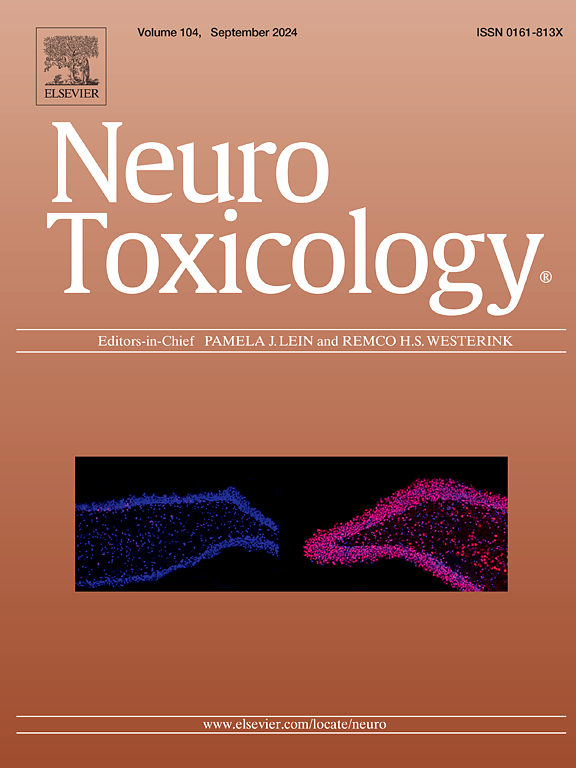Therapeutic potential of pranlukast against cuprizone-induced inflammatory demyelination and sensory impairment in mice: Comparison with fingolimod
IF 3.9
3区 医学
Q2 NEUROSCIENCES
引用次数: 0
Abstract
Inflammatory demyelination is present in debilitating diseases such as Multiple Sclerosis (MS). Several drugs are available for MS treatment, with fingolimod as a first-line oral option in the United States. However, a cure has yet to be established, and therapeutic failures are common, highlighting the need for continued research into new pharmacological targets. Pranlukast has shown positive effects on myelination in cell cultures and after LPC-induced demyelination in mice, but it is not yet part of the therapeutic arsenal for this disease. This study investigates pranlukast’s effect on demyelination protection in an MS animal model, compared to fingolimod. For this purpose, young adult Swiss mice were treated for five weeks with a 0.2 % cuprizone diet and received daily intraperitoneal injections of pranlukast (0.1 mg/kg), fingolimod (1 mg/kg), or vehicle. Pranlukast treatment, like fingolimod, partially preserved sensory function in the tactile sensitivity test. Both treatments partially preserved myelin basic protein (MBP) levels, but only fingolimod preserved lipids and myelinated fibers in the corpus callosum (CC) at all g-ratio ranges. Cuprizone and Pranlukast groups presented more microglia/macrophages in the CC, but fewer presenting reactive microglia/macrophages and less NOS2 staining in pranlukast-treated when compared to the cuprizone group, while fingolimod treatment prevented the increase in Iba1 in the CC. In summary, this study demonstrated that pranlukast is a good candidate as a novel drug for use in conditions of inflammatory demyelination, such as MS, by restoring function through modulation of the inflammatory environment.
普鲁卡斯特对铜酮诱导的小鼠炎性脱髓鞘和感觉损伤的治疗潜力:与芬戈莫德的比较。
炎性脱髓鞘存在于衰弱性疾病,如多发性硬化症(MS)。有几种药物可用于治疗多发性硬化症,在美国,芬戈莫德是一线口服药物。然而,治疗方法尚未建立,治疗失败是常见的,强调需要继续研究新的药理靶点。Pranlukast在细胞培养和lpc诱导的小鼠脱髓鞘后显示出对髓鞘形成的积极作用,但它还不是治疗这种疾病的一部分。本研究在多发性硬化症动物模型中,与芬戈莫德相比,研究了普鲁卡斯特对脱髓鞘保护的作用。为此,年轻的成年瑞士小鼠接受了为期5周的0.2%铜酮饮食治疗,并每天腹腔注射普氨苄司特(0.1mg/kg)、fingolimod (1mg/kg)或对照物。普鲁卡斯特治疗与fingolimod一样,在触觉测试中部分保留了感觉功能。两种处理都部分保留髓鞘碱性蛋白(MBP)水平,但只有芬戈莫德在所有g比范围内保留了胼胝体(CC)中的脂质和髓鞘纤维。与铜酮组相比,铜酮组和普鲁卡斯特组CC中出现了更多的小胶质细胞/巨噬细胞,但出现反应性小胶质细胞/巨噬细胞较少,普鲁卡斯特组NOS2染色较少,而芬克莫德组则阻止了CC中Iba1的增加。综上所述,本研究表明普鲁卡斯特是治疗炎性脱髓鞘(如多发性硬化症)的良好候选新药。通过调节炎症环境来恢复功能。
本文章由计算机程序翻译,如有差异,请以英文原文为准。
求助全文
约1分钟内获得全文
求助全文
来源期刊

Neurotoxicology
医学-毒理学
CiteScore
6.80
自引率
5.90%
发文量
161
审稿时长
70 days
期刊介绍:
NeuroToxicology specializes in publishing the best peer-reviewed original research papers dealing with the effects of toxic substances on the nervous system of humans and experimental animals of all ages. The Journal emphasizes papers dealing with the neurotoxic effects of environmentally significant chemical hazards, manufactured drugs and naturally occurring compounds.
 求助内容:
求助内容: 应助结果提醒方式:
应助结果提醒方式:


